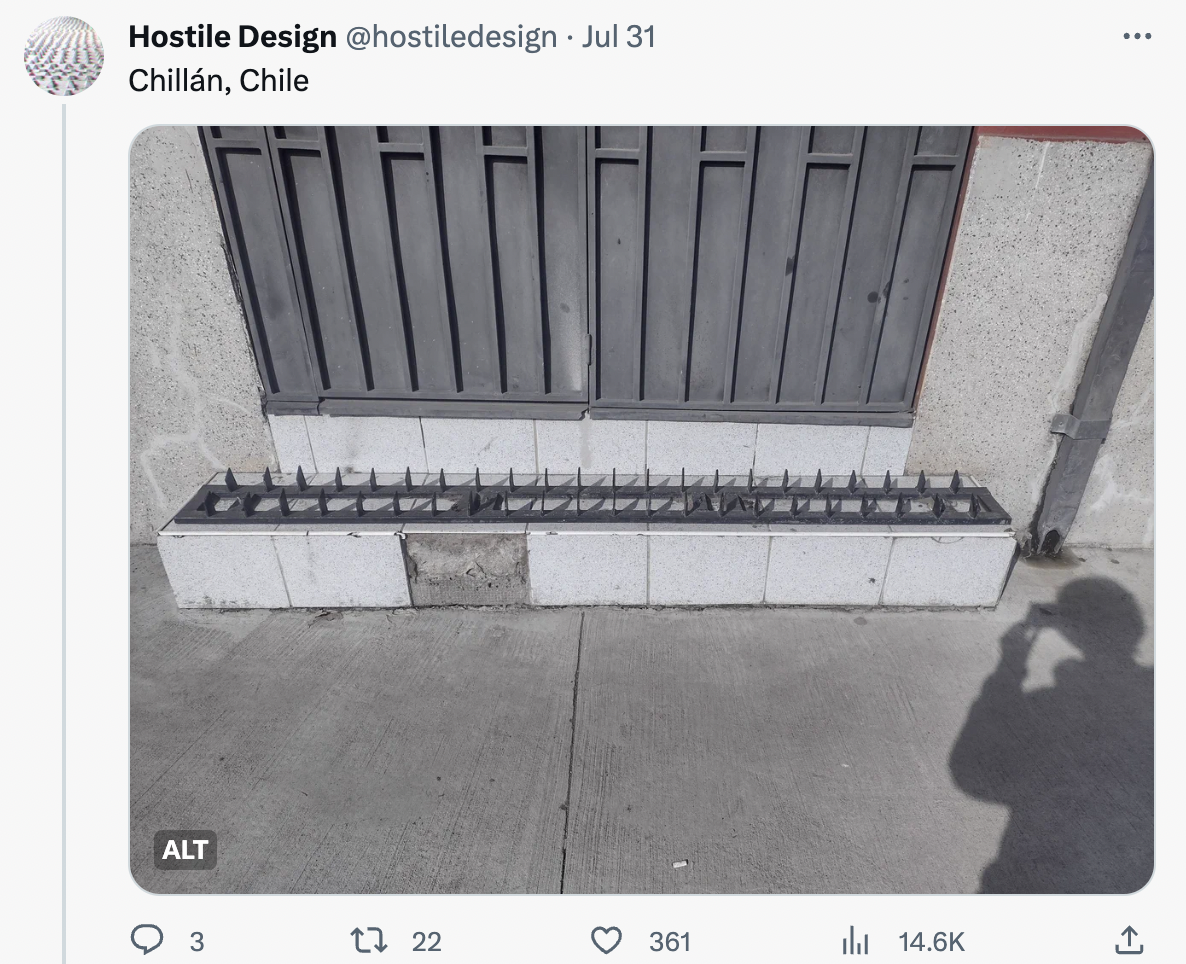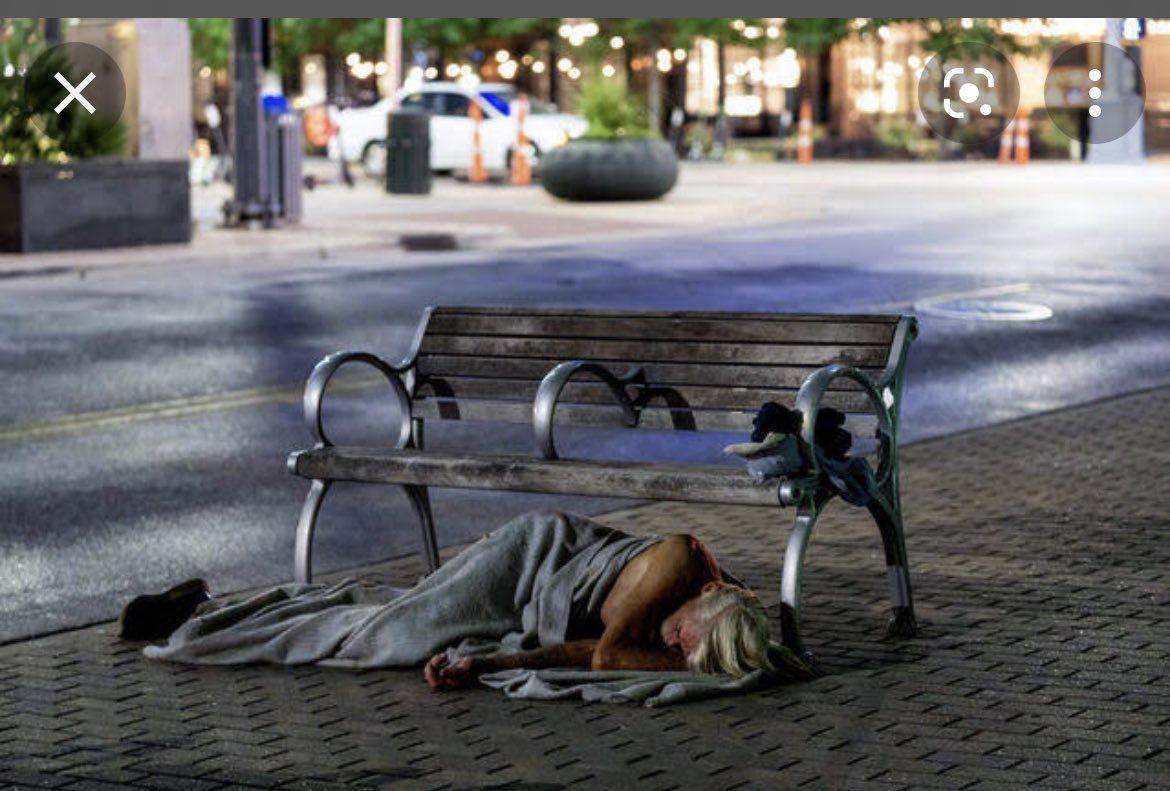Table Of Content
- University protests dominate media coverage, obscuring the true horror of Gaza war
- Sign up for our FREE morning newsletter and face each day more informed.
- Anti-loitering spikes in Mumbai, India Hostile Architecture
- Examples of Hostile Design
- Everyday citizenship and COVID-19: “Staying at home” while homeless
- Under-road spikes in Guangzhou, China
- Nadya Tolonnikova Headlines American Folk Art Museum Benefit Event

A day prior, organizers at Harvard University set up an encampment at the heart of Harvard Yard, which was closed by administrators in anticipation of pro-Palestinian protests earlier this week. HD NextGen Forum is an invitation-only conference that blends education, inspiration, business, and socializing for the next generation of hospitality design leaders. From inspirational keynoters to the influential Owners’ Roundtable hosts, the lineup of speakers of the event is always sure to motivate and educate.
University protests dominate media coverage, obscuring the true horror of Gaza war
Homeless know there is little to no bite, or consequence to breaking laws. Even sweeps are in effective because they return in hours without consequence. Our chronic homeless who refuse help and housing are extremely resourceful and knowledgable at getting away with what they do, it's a shame they won't use that resourcefulness to better their lives and doing something for society and themselves. Current strategies will continue to fail because there is no enforcement and consequence to flouting laws. Hostile architecture also can be created by entirely taking away places to sit like Mayor Jeremy Harris did in 2002 when his administration removed all the public benches on the Fort Street Mall. The most significant attitude changes will likely come whenever we are facing challenges that cannot be solved by urban designers or mental health practitioners alone.
Sign up for our FREE morning newsletter and face each day more informed.
Last year, researcher Cara Chellew created #defensiveTO, a website that documents hostile architecture in the Greater Toronto Area and beyond. Homeless people and the inclusion of "drug dealers" and " drug users" in that reference as written here is purely discriminatory. The latter being a consequence of failed drug policy popularly supported by the public. The drug war has been around since the 80s, it's old but has become so ingrained it now supports several industries. The responsibility is in part ours .Altho it's comfortable isn't it, to sit in our homes judging the lives of people whose lives we know nothing of, other than that they are dirty and criminal and unfit to look at.
Anti-loitering spikes in Mumbai, India Hostile Architecture
Spikes and ridges may be the most shocking type of hostile design, but little fences, such as the one around the entire perimeter of Washinton Park are just as offensive. The ridges around the federal courthouse prevent people from sitting on their wall. The ridged metal in front of Holtman’s Donuts stops people, who may be waiting on a bus there, from having a comfortable place to sit. The recent removal of many of the bus benches throughout the city highlights the lack of value we put into our public transit system. Hostile design is typically implemented to deter whatever behaviour the local authorities feel is most disruptive to their society, from littering to loitering, drug use, and even homelessness.
We need to look from the very beginning to see if spaces are being designed for everyone,” she says. With the homeless population in South Florida relying on tourists to survive, COVID-19 makes earning some form of an income tough enough even without these new architectural pieces. Just to add to the turbulent times, this form of city planning has sent the message to our homeless populations that we do not want them here, which I am sure for the majority of South Florida’s population is far from the truth.
Everyday citizenship and COVID-19: “Staying at home” while homeless
The silent war of hostile architecture in our cities - The Oracle
The silent war of hostile architecture in our cities.
Posted: Wed, 07 Feb 2024 08:00:00 GMT [source]
The current encampments and protests are “well within a deeply worn tradition of student activism on college campuses,” said Cohen. Several student-led organizations across the country, such as Students for Justice in Palestine’s Columbia University chapter, have listed similar demands on social media. But students say they are determined to remain at their encampments until their respective universities hear and meet their demands. Police ordered student activists and protesters at other colleges — including Yale University, NYU, the University of Minnesota and the University of Texas at Austin — to disperse or face arrest. That evening, masked pro-Palestinian protesters occupied an administrative building at Cal Poly Humboldt and barricaded the entrance, prompting administrators to shut down the public university.

Under-road spikes in Guangzhou, China
It serves owners, operators, brands, purchasing agents, interior designers, and architects involved in the design of hotels, resorts, restaurants, nightlife, spas, and all other hospitality-oriented projects. Hospitality Design continues its four-decade mission to connect and enrich the industry through innovative projects, inspiring products, the latest trends, development spotlights, and interesting interviews with the industry’s leading professionals. But many USC students and faculty members condemned the university’s decision to call in LAPD officers, saying their presence escalated tensions. Part of the difference is rooted in the legal requirement for public universities to honor the 1st Amendment, which does not directly apply to private institutions. But not all public campuses have refrained from an aggressive response. The University of Texas at Austin, for instance, sent in armed state troopers who arrested more than 50 people this week for staging what witnesses said was a peaceful protest.
Nadya Tolonnikova Headlines American Folk Art Museum Benefit Event
But art is also an area in which hostile architecture can be perpetuated. Petty believes that street art and public sculpture will increasingly be incorporated into cities’ social control strategies. In other words, that huge eye-catching sculpture in the courtyard of a fancy office building may ostensibly be there for aesthetic reasons, but it’s also preventing the wrong kind of people from congregating in a space that’s not meant for them. Whether it be a bench with a bar in the middle, as you see in Washington Park, or it be a circular bench set up, seen in a few places downtown, it’s clear that laying down is strictly prohibited. While this may make sense at bus stops, what does it mean when you cannot lay down in a park? Would those people who had a vision for a great city park agree with the mentality to make it as inhospitable as possible?
Where there is a genuine need to create safe spaces that are sympathetic to the needs of different identity groups, hostile design is employed as a quick and cheap solution. This allows, says Atkinson, the inclusive agenda to fall by the wayside. Spanning nearly 200 square meters beneath the Huangshi highway, these concrete spikes prevent homeless people from using the bridge as shelter, Residents reported that people used to gather under the viaduct but have since been forced to move out.
In 2014, widespread outrage arose when a luxury London apartment building installed “anti-homeless spikes“ to prevent people from sleeping in an alcove near the front door. The spikes, which were removed following the public outcry, drew attention to a broader urban phenomenon known as hostile architecture. The problem with hostile architecture, and the source of its negatively connotated name, come from its impact on the homeless community in the area. This type of architecture targets the homeless community, who are often looking for places to sleep or rest in public, by purposefully restricting these individuals’ access to an area. A common type of hostile architecture comes in the form of “anti-homeless spikes” or studs that are embedded in flat surfaces to make sleeping, needless to say, difficult, uncomfortable and impractical.
Hostile architecture, sometimes called defensive architecture, is a method of urban design that generally discourages the use of spaces in any other way than the intention of the owner. While at first glance this type of space design might seem logical it has a deep-rooted hatred underneath. I cannot say much about Calgary becoming unwelcoming, as I spent only three days in the city. I am not familiar with the way the city was before or after certain interventions. But I did notice some very typical examples, like benches with armrests and spikes that discourage extended sitting.
Their lack of holes or crevices prevents drugs from being stored inside them, and the surface design is intended to prevent littering. The BBC has described these benches as a “masterpiece in unpleasant design,” especially given that they are also not comfortable to sit on. In order to deter homeless people from camping under a particular overpass in Seattle, the city’s Department of Transportation installed eighteen bicycle racks in that space. The racks consisted of simple metal arches protruding from the ground.
We asked her about how unpleasant design is evolving, what it says about cities. In the words of Frank Swain, the Camden bench is “the perfect anti-object” for its ability to strictly regulate its use. With its irregular curves, it’s difficult for skateboarders to grind on it and for people to lie on it; with its crannyless surface, it’s impossible to stash drugs in or drop garbage through it.
Five Southern California charter cities need not worry about lot splitting in their single-family zoned neighborhoods thanks to a Los Angeles County superior court ruling on April 22. It often attacks the most vulnerable people in our community, regularly the homeless. While the precise target of this locking is unknown, it’s possible to think of several demographics who would benefit from a place to rest but whose presence is often unwanted.
In addition to providing a place to lock up one’s bike, they made it difficult to set up camp. However, they were soon removed after gaining negative media attention. This is to contrast with the privatization of public spaces, like alleys and sidewalks, in the area. While people on fixed and low incomes are struggling to stand waiting for the bus, a few feet away restaurant outcroppings take up the majority of the sidewalk. People sitting, enjoying their expensive meals can enjoy the sidewalk space, but it is otherwise an offense to sit on the sidewalk.
Hostile architecture, sometimes called defensive urban design or exclusionary design, is the name for uncomfortable elements built into public features such as park benches or added to building door fronts to prevent homeless sleepers from commandeering the spaces. Ranging from slanting benches to metal spikes, hostile architecture occurs when elements of the built environment are specifically designed to curtail “undesirable” use. Usually, the groups targeted by hostile architecture are homeless people looking for somewhere to rest or teenagers looking for somewhere to play.
No comments:
Post a Comment